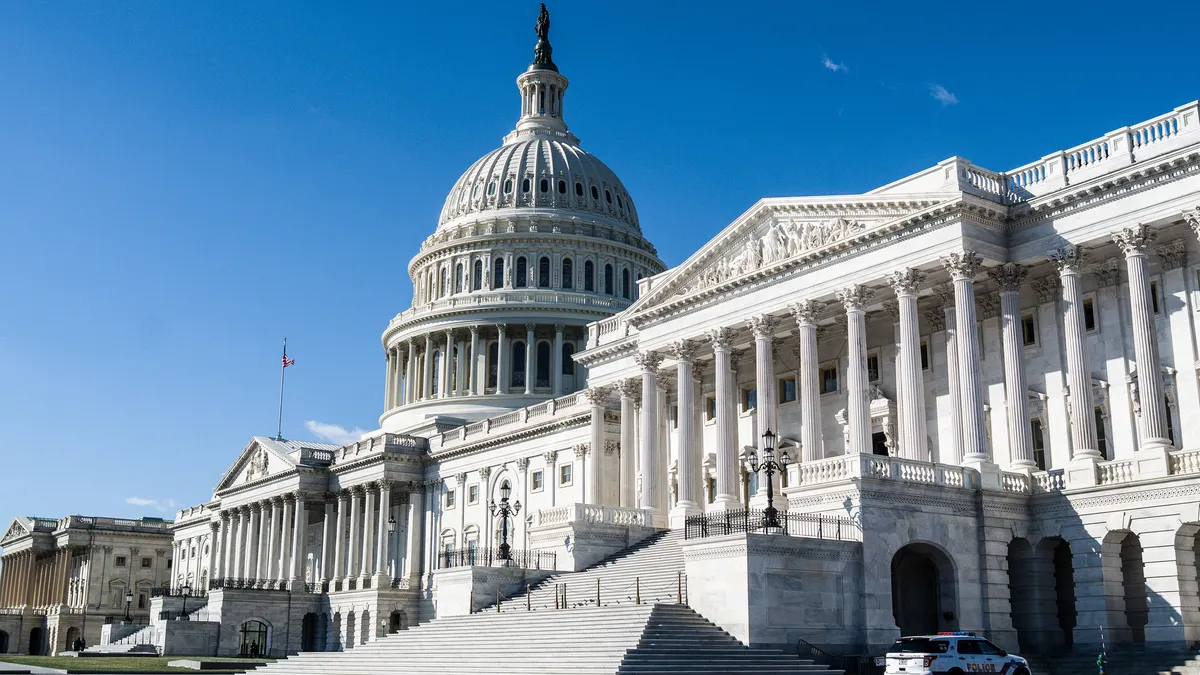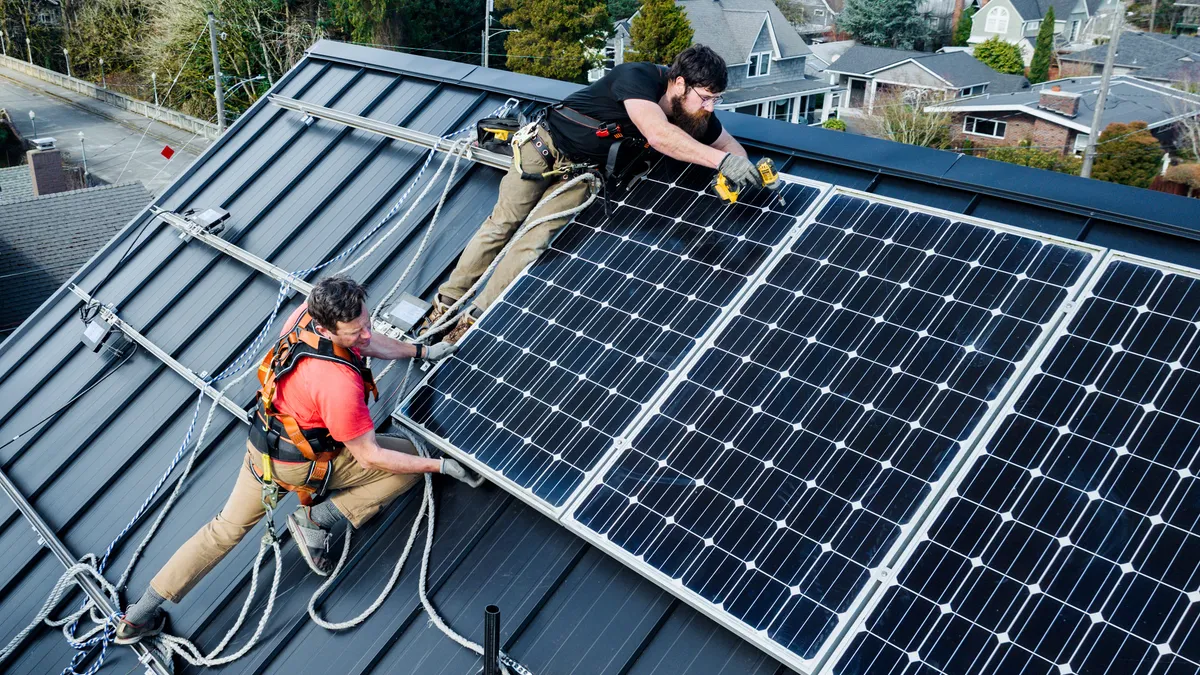Three bipartisan energy storage bills were introduced in Congress last week, but none would provide investment tax credits, which industry has sought to increase the competitiveness of the technology.
"I think the question, in our minds, is going to be do these folks see [storage ITC] as something that's a near term concern or do they see this as something they want to put into a larger, longer conversation," Jason Burwen, policy vice president at the Energy Storage Association, told Utility Dive.
The three storage bills, which focus on opportunities for loans and research in energy storage, come amid rising interest in the technology, with an increasing number of state targets, a new bipartisan storage caucus in the U.S. House of Representatives and increased funding in the President's latest budget request.
Meanwhile, industry priorities like the ITC are competing with a host of other energy issues in Congress, including nuclear power, curbing emissions and the Green New Deal.
Hill rehashes support for storage
Last Wednesday, Reps. Mark Takano, D-Calif., and Chris Collins, R-N.Y., announced a new Advanced Energy Storage Caucus along with a package of battery storage bills previously introduced at the end of 2018 in the last Congress. The action is "one more signpost" on the path of continuing bipartisan interest in energy storage, according to Burwen.
The pair had launched the Battery Energy Storage Caucus in 2015 and have supported battery incentives before. Collins represents a state that has doubled its energy storage goals in the last year to 3,000 MW by 2030, and storage is viewed as essential to meeting California's goals to pursue 100% clean energy.
The new bipartisan caucus was introduced "to work with industry leaders in promoting further research and development of battery storage technologies to ensure the United States can operate on a reliable and resilient energy grid," Collins said in a statement.
While the bills do not include tax incentives, they are expected to enable storage to increase grid reliability and boost renewable energy:
- Storage Technology for Operational Readiness and Generating Electricity (STORAGE) Act, H.B. 1744, would amend the Public Utility Regulatory Policies Act (PURPA) to include energy storage systems and to ensure electric utilities are considering the technology as part of a supply-side resource process.
- Advancing Grid Storage Act, H.R. 1743, requires the Department of Energy (DOE) to carry out energy storage programs for research, loans, technical assistance, grants and other purposes.
- The Battery Storage Innovation Act, H.R. 1742, increases the eligibility of projects for "innovative technology loan guarantees" for residential, industrial or transportation applications.
"I think that representatives Takano and Collins should be commended for keeping to beat the drums and pay attention to what Congress is doing on storage," Burwen said. "They're refreshing this conversation for a new Congress."
Energy storage analysts declined to comment on the prospects for the bills passing this year.
Storage appropriations
While the White House's proposed budget for FY 2020 included deep cuts to the DOE once more, it also contains funds for new clean energy programs, including an advanced energy storage initiative.
The budget includes $158 million for a project between DOE's Office of Electricity and Office of Energy Efficiency and Renewable Energy (EERE) to advance research and development for energy storage "as a key to increasing energy security, reliability and resilience." The program, dubbed the "Advanced Energy Storage Initiative," was proposed alongside a $59 million program to advance thermoelectric power plants, the "Harsh Environment Materials Initiative."
The proposed DOE budget also included grid storage as part of the recommended investment in labs and technology testbeds. The budget included $5 million for a "new Grid Storage Launchpad initiative, which would support a new lab-based grid-scale battery testing center to help push technologies forward" alongside funding for different technologies that support the next generation of commercial nuclear reactors.
"[C]heap grid scale storage means that renewables can compete with fossil fuels on cost alone," Takano said in a statement.
The budget proposal will likely face even more of an uphill battle this year after Democrats won control of the House of Representatives last November. But new and increased funding for energy storage programs amid cuts to renewable and advanced energy programs shows a growing focus on the technology within the administration.
"Assuring grid security and resilience will require greater grid flexibility and the deployment of grid assets, such as energy storage, that can efficiently buffer increased variable supply and demand," according to the budget.






















